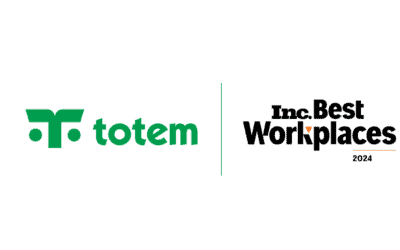On December 21, 2020, Congress passed a new bill, the Consolidated Appropriations Act of 2021, consists of several bills combined into one piece of legislation.
Legislators have been working for over two years to address surprise medical billing by healthcare providers due to no fault of the consumer. Excessive fees have been charged by out-of-network providers when members had no other healthcare alternative and without any knowledge of the billed charges until after the fact. For years, this horrible practice has been punishing employees and individuals with “
surprise bills,” often thousands of dollars outside what was paid by the employer health plan.
On January 1, 2022, plans and providers are prohibited from billing patients more than the in-network cost sharing amounts in certain circumstances. The provision applies to emergent and non-emergent situations where the patients don’t have the ability to choose a provider. Individuals will no longer be able to receive balance bills without their consent for emergency care, air ambulance care, or non-emergency care at in-network hospitals treated by an out-of-network provider without their knowledge. Providers will be required to give patients 72 hours notice and an estimate of the charge in advance.
The bill also includes an independent dispute resolution (IDR) process for surprise medical billing. The self-insured employer, not the carrier, would be responsible for settling claims disputes. In-network fees will be the basis for payment and dispute resolution.
Summary of Healthcare provisions
On December 11, 2020, leaders of Congress announced a bipartisan bill to help protect Americans from surprise medical billing. 17 states have adopted comprehensive legislation. However, states cannot regulate self-funded employer health plans. States are also restricted from regulating air ambulances, a costly offender of surprise billing practice. Therefore, the new federal legislation helps protect more than 135 million Americans covered by a self-funded employer plans as well as other individuals without protections.
The new legislation effective on January 1, 2022, will protect consumers from surprise bills for: 1) emergency services delivered by out-of-network providers, including emergency air transport, or by out-of-network facilities; and 2) nonemergency services provided by out-of-network providers in network facilities and for which patients do not consent.
Section 102 of the legislation, effective January 1, 2020, ensures that patients are only required to pay the in-network share amount for out-of-network emergency care, certain ancillary services at in-network facilities, and out-of-network care provided at in-network facilities without the patient’s consent. Group health plans are will also be required to develop an audit process by October 1, 2021. The out-of-network rates to be paid by health plans will be determined by Independent Dispute Resolution (IDR).
Patients are held harmless from surprise air ambulance bills and only required to pay the in-network cost-share amount for out-of-network air ambulances. The provision includes a 30-day open negotiation period for providers and payers to settle out-of-network claims. If the provider and payor are unable to settle, they may access the binding arbitration. Reporting requirements are included in the provision for compliance review and auditing. Providers are required to submit two years of cost data to the Secretaries of HHS and Transportation and insurers to submit two years of claims data related to these services.
Health plan are required to be transparency regarding in-network and out of-network deductibles and out-of-pocket limitations. Most health plans are currently complying with this provision of the legislation. Beginning January 1, 2022, plans are required to include these amounts, along with the phone number and website address on the ID Card.
Section 108 implements protections against provider discrimination. Secretaries of HHS, Labor, and Treasury are required to promulgate a rule by January 1, 2022.
Secretary of HHS and the FTC and Attorney General must conduct a study by January 1, 2023 and annually thereafter for the next four years on the effects of the provisions of the Act. The Government Accountability Office (GAO) will be required to submit to Congress a report on the impact of surprise billing provisions by January 1, 2025, a report on adequacy of provider networks by January 1, 2023, and a report on Informal Dispute Resolution (IDR) and financial relationships by December 31, 2023.
Consumer protections include external review in certain cases of surprise medical bills as well as fair and honest advance cost estimates. Advance Explanation of Benefits for scheduled services will be required at least three days in advance to give patients transparency into which providers are expected to provide treatment, and the expected cost and network status.
Healthcare providers and facilities must verify, three days prior to service and not later than one day after scheduling of services, the type of coverage and provide notification of good faith estimate to the payer or patient whether or not the patient has coverage. HHS is required to establish a patient-provider dispute resolution process for uninsured individuals as well no later than January 1, 2022.
In the event a provider changes network status, patients with complex care needs have up to a 90-day period of continued coverage at the in-network level.
Health plans are required to offer and maintain a price comparison tool by phone or internet, and this requirement begins January 1, 2022.
Effective January 1, 2022, health plans are required to keep and maintain accurate provider directory information which must be made available to patients online or within one business day of the inquiry.
The legislation requires the HHS, Labor, and Treasury Secretaries establish an advisory committee no later than 90 days of enactment, for reviewing options to improve disclosure of charges and fees for ground ambulance services, inform consumers of insurance options, and protect consumers from surprise billing.
Title 2 of the No Surprises Law includes several mandates that increase overall healthcare transaction transparency. Section 201, Removal of Gag Clauses on Price and Quality Information, amends ERISA and the Internal Revenue Code to restrict the use of contractual language between health plans and providers that prevents health plan sponsors and members from accessing provider-specific cost and quality information. Provider networks are still able to prohibit plans and insurers from publicly disclosing the information.
The legislation also includes full disclosure of compensation of $1,000 or more paid to brokers and consultants. Brokers are required to provide a description of the services along with the associated direct and indirect compensation.
Section 203 strengthens parity in Mental Health Parity and Substance Abuse Disorder Benefits. Health plans are prohibited from providing worse benefits for mental health and substance abuse than for medical and surgical care. This also includes “non-quantitative treatment limitations – limits on benefits not tied to monetary or visit limits such as a prior-authorization requirement. Secretaries of HHS, DOL and Treasury are charged with issuing final guidance within 28 months of enactment of the bill. The secretaries of the HHS, DOL, and Treasury have 18 months to issue final guidance under this section. However, they are still able to request reports as soon as 5 days after enactment.
In Section 204 of the No Surprises Act, group health plans are required to report prescription drug-related information to secretaries of HHS, DOL, and Treasury. This includes enrollment data, top drug utilization, total spending on healthcare services by plan by category, average premium paid by employer and employees, and the impact on premiums by rebates and fees paid by drug manufacturers to the plan or its administrators or providers. The first report is due one year after bill enactment with subsequent reports due June 1 each year.



